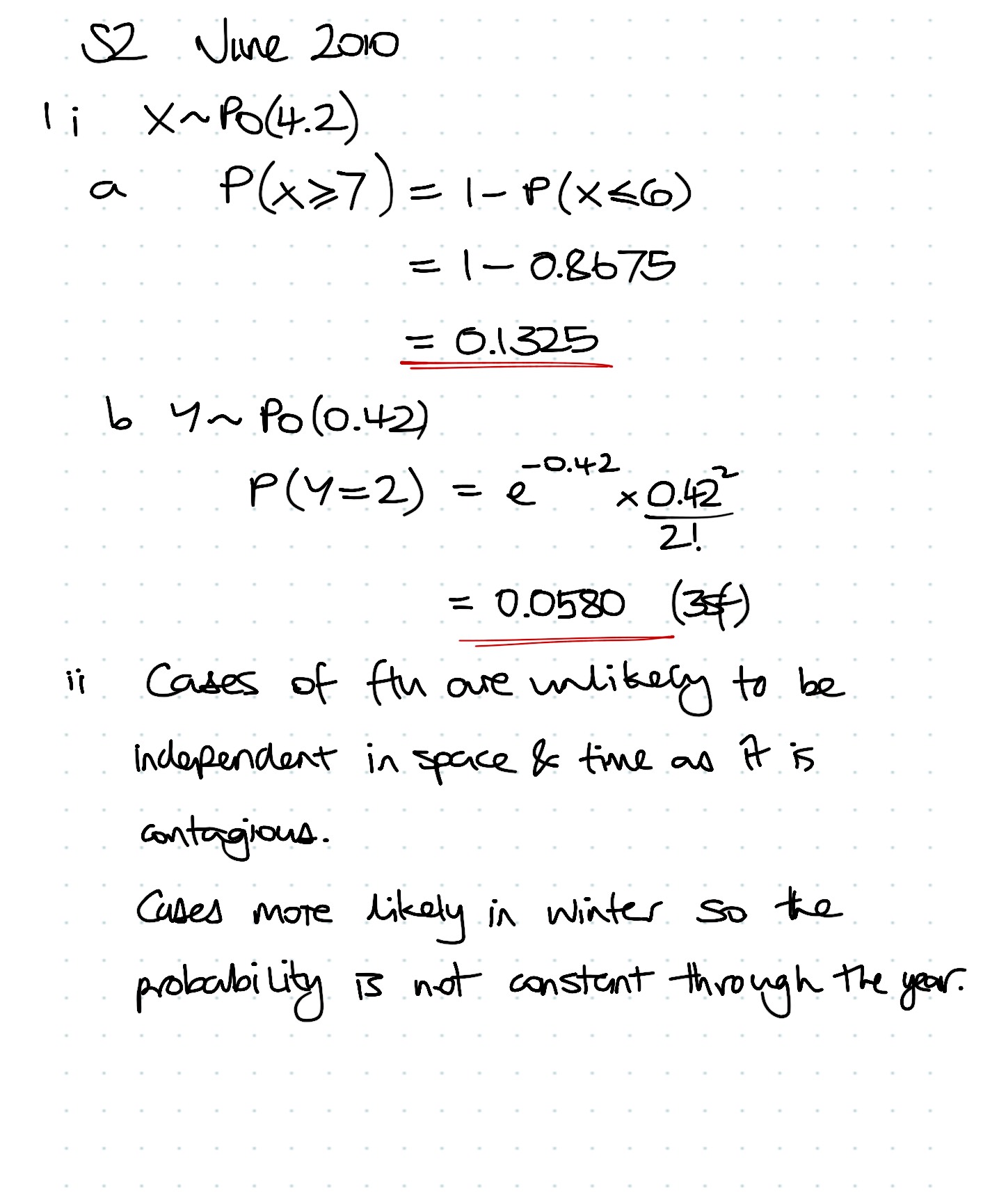When should you divide by n, or use n/n-1 with the variance when calculating values based on normally distributed variables?
Question 3 of OCR’s 2014 S2 unit is this:
As we know that G is normally distributed and we have a frequency distribution it is reasonable to use the relative frequency as an estimate for a probability based on that normal distribution. The first two parts of this question are answered by using the standardised normal using the lower and upper sections of the frequency distribution to give relative frequencies in place of probabilities. Using the inverse of Φ gives the values of z in the standardisation equation. Solving these simultaneously gives σ and μ. There is no need to divide the variance by n in this as it is really a relative frequency problem that happens to use a normal distribution. Sample size is irrelevant in relative frequency calculations.
Part iii is saying that the values are estimates as the data is taken from a sample. Thinking back to work done in year 8, you’ll know that a larger sample will give a better estimate of probability when using relative frequencies. A solution for parts i and ii is shown below.
Then we get on to question 7 from the same exam paper. It looks like this:
In this question we again have a sample taken from a normal distribution but don’t have a frequency distribution so can’t use the technique above to find μ and σ. This means that we should calculate those values from the sample summary data given. We need to find the population distribution parameters so will require the unbiased estimators. Using the Population distribution, the probability that a time is over 90 minutes will be the proportion of candidates unable to complete the paper in that time. For part ii of the question the test will be against the sample data so assume the population mean and variance as calculated in part i, but divide the variance by sample size because we’re testing the sample against a population.
In answer to part iii of the question, the assumption of a [normal] distribution is necessary in part i as otherwise we’d not be able to calculate a probability/proportion. It is not necessary in part ii as the Central Limit Theorem applies as the sample size is sufficiently large.
Tags: Teaching, Solutions, posts, School, A Level, Exam, S2
April 03, 2018 at 04:37PM
Open in Evernote












